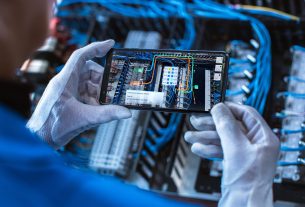Veronica Grasso from Hyster Europe reveals the latest thinking on lift truck power options by the company’s engineering Think Tank. She claims there is no “one size fits all” and gives compelling reasons why some options are better than others in different industry applications.
When to choose lithium-ion lift trucks
Lithium-ion is becoming a popular power option for lift trucks, particularly in the food industry where operations are mostly indoors and there is a priority to reduce contamination. Lithium-ion has no acid which could spill and no fumes – hydrogen and other gases can be produced by lead acid, which are unwelcome in clean food production and storage areas.
With no equalising, watering or cleaning required, lithium-ion batteries do not need the high levels of maintenance that their lead acid counterparts require. Lower maintenance helps to reduce cost and improve the reliability of battery life which is important in the busy food manufacturing and storage industry.
The big difference with lithium-ion is that it allows for opportunity charging during planned breaks and lunch time. This ‘top up’ approach can simplify operations as you only need one battery, not two. Plus, over a period of years, lithium-ion may work out cheaper in the right application, with lower total battery costs.
With good availability and accessible prices, it is expected that more applications will start to adopt lithium-ion power options. It is likely to be particularly appealing for new sites, as you don’t need to build a dedicated charging room, so can make significant space savings.
However, there are infrastructure considerations which will turn some businesses off. For example, older sites may need wiring changes to accommodate the power needs and charging locations. Draw on the electric supply is another consideration. Lead acid batteries charge slowly over a long period while lithium-ion options charge quickly and need more power. Infrastructure needs to accommodate these requirements.
Why lead acid batteries are still best for many
Electric lift trucks with lead acid batteries are still often considered the best option for many indoor logistics operations such as in a pallet network. Applications benefit from efficiency and performance comparable to LPG/diesel alternatives and a potentially lower cost of ownership.
Typically these are multishift operations so forklift batteries can be exchanged easily between shifts without regular opportunity charges. However, these applications need the space for a charging room and to avoid downtime, must have strict processes in place to make sure batteries are charged to keep operations running. They also need a weekly maintenance and equalisation schedule.
Trucks like a 48V 1.6 to 2 tonne capacity lift truck or a 2.5 tonne 80V forklift, such as the Hyster® J series are common in pallet network and indoor logistics operations. A number of different battery exchange options also help to speed up and simplify the battery exchange process by meeting specific application requirements.
Why LPG lift trucks are a powerful choice
In today’s beverage industry, lift trucks tend to be multi-purpose, handling products from the bottling plant or storage, and on to transport.
The lift trucks need to be flexible and available at all times during long, busy shifts, with especially high demand in summer. Such intensive businesses can’t afford to lose productivity from any lift truck, where typically you find fleets of 10-12 forklifts.
This is where LPG is particularly well suited. There is high energy content in each gas bottle giving the lift trucks full power through a shift until the bottle is empty. In just a few minutes the bottle can easily be replaced, unlike batteries that need switching or charging and consequently require stricter processes and the space for charging rooms.
For the beverage industry, LPG is also a “cleaner fuel” with minimal soot or particulate matter so it’s suitable for indoor use and use inside a trailer. With intense summer work demands and high temperatures in the yard, batteries would become hot and less efficient, whereas LPG has the advantage of not being adversely affected by hot weather.
Most beverage loads are palletised at about 1 tonne and often multi pallet handlers (handling 2, 4 or 6 pallets) are used. This demands full power, responsive control and speed at all times and Hyster Europe would typically recommend a 3-3.5T lift truck from the Fortens® range.
Where diesel lift trucks thrive
Building material storage or retail operations are usually outdoor applications and are a good example of where diesel trucks thrive in all weathers. Drivers can work the trucks very hard throughout a shift and leave them outside overnight, coming back the next morning ready to go in the rain, snow or summer sun.
Electric trucks are often less suited to these applications due to the infrastructure and process requirements, while diesel lift trucks offer good uptime and a low cost of operation with an easily available, low cost fuel. The Hyster® H2.5XT is designed for these everyday applications with the advantage of being simple to maintain and fix.
And finally… is everyone destined to use fuel cells?
In certain applications with the right infrastructure, fuel cells may be the best power option and Hyster Europe provides this as yet another option. However, it is believed there are still less than 1,000 fuel cell lift trucks operating in Europe, and this number is growing slowly. For most operations, fossil fuels and batteries are here to stay – at least for the next decade.
Hyster Europe can provide specialist advice on the best power option for specific industry applications. Contact the local Hyster® distributor or visit www.hyster.com.
Veronica Grasso is Product Manager, Counterbalance Products EMEA for Hyster Europe.





